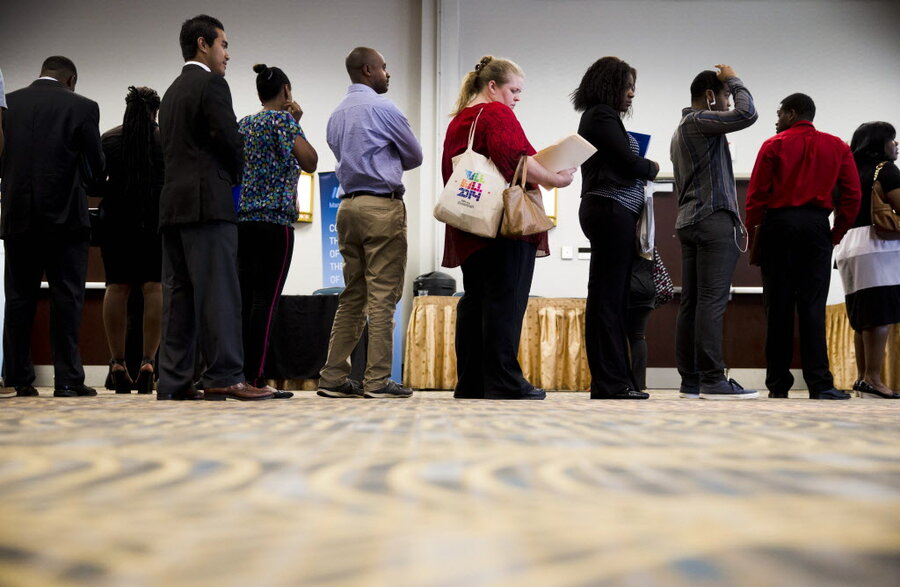Wages were up in 2015, but so was wage inequality
Loading...
Widening income inequality is one of the hot-button topics of this campaign season, from Donald Trump’s caustic stump speeches to Bernie Sanders’ leftist vision. And for good reason: According to experts, it's becoming a bigger and bigger problem for most Americans.
Despite growth in wages over the past several months, wage inequality rose in 2015, according to a report released Thursday by Economic Policy Institute senior economist Elise Gould. The wage gap has been widening for the past 35 years, and the impact is most pronounced for women, blacks, and Hispanics.
The report draws chiefly upon statistics from the Bureau of Labor Statistics and the Census Bureau. While the gulf between the middle- and lower-class wages has held stable since 2000, the gap between the very wealthy and everyone else is expanding.
While inflation-adjusted wages did grow in 2015, not every segment of the population felt the benefits. Wages for men in the top 90th and 95th percentiles of earners increased by 6.2 percent and 9.9 percent, respectively, even as wages stagnated or even dropped off for men in the bottom 60 percent of earners. Wages increased about 2.6 percent for median earners, according to the EPI study.
There was some progress for women, though they continue to earn much less than men. Women saw their wages rise from 78.0 percent to 83.3 percent of median male wages. The biggest gains were for high-earning women in the 90th and 95th percentiles, and women working low-wage jobs in the 10th and 70th percentiles. High-earning women saw their wages rise by 6.7 and 8.7 percent, and low-income women saw their incomes increase by 1.9 and 2.5 percent, respectively.
“The top of the men’s distribution is much higher than the women’s distribution [because] women aren’t occupying spots,” Dr. Gould says in an interview with The Christian Science Monitor. “There are different trends that are happening for women and men because men are occupying higher-wage jobs at a much higher rate [than women].”
In the bottom 10th percentile of earners, the average woman’s wages for 2015 were only $8.57 to the $9.29 earned by men. Yet in states that introduced legislated minimum-wage increases, women saw their wages rise by 5.2 percent. For women living in states that did not introduce a minimum-wage increase, their wages rose by only 3.1 percent.
“It’s no surprise that typical workers are frustrated with the economy since wage growth has been slow for so long,” Gould said in a press release accompanying the study.
Wage growth for white workers grew as fast as or faster than black wages at all levels; wages for black workers in the bottom 60 percent of earners are still lower than they were in 2000. Wages for Hispanic workers grew comparatively over the same period, slowly closing the gap with low-income white workers while at the same time earning more than black workers at the same income levels.
To provide low-income workers relief in the short term, Gould recommends that the Federal Reserve hold off on raising long-term interest rates any further this year, to let more jobs come back into the market.
She doesn't see much of a solution on that front in presidential candidates’ tax plans, however, on either the Democratic or Republican side.
“The tax burden doesn’t stick out - what really sticks out is the inadequacy of their pre-tax income. That’s what’s hurting middle-class families,” she says. “I don’t think, as a share of people’s budget, that’s where the relief should come. We think about middle-class families that are struggling to pay for housing, childcare… we need to really think about increasing their wages.”








